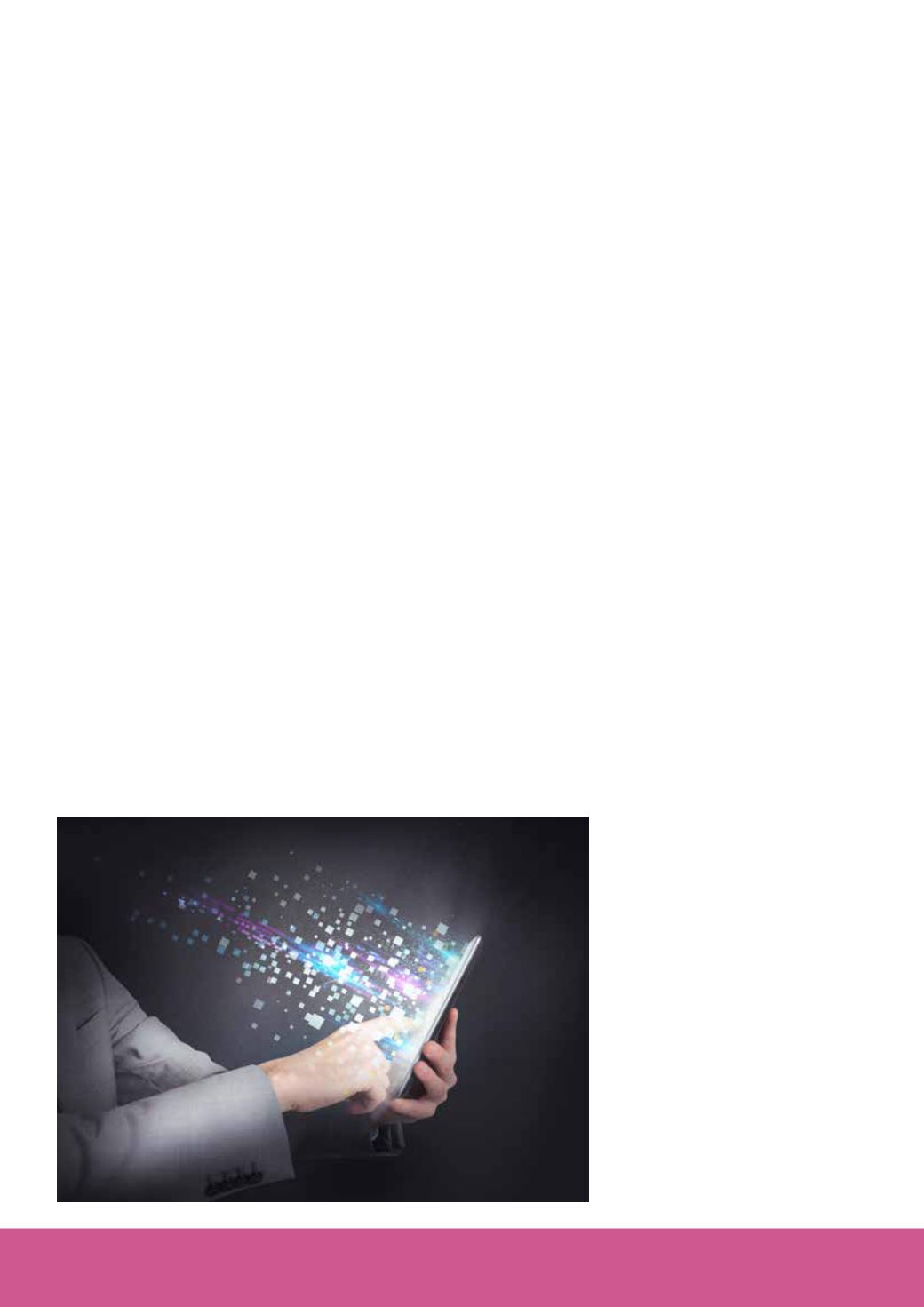
ISSUES
: The Internet of Things
Chapter 2: Our digital future
36
Digital life in 2025
Experts predict the Internet will become “like electricity” – less visible, yet more deeply
embedded in people’s lives for good and ill.
By Jana Anderson and Lee Raine
Pew Research Center
T
he world is moving rapidly
towards
ubiquitous
connectivity that will further
change how and where people
associate, gather and share
information, and consume media.
A canvassing of 2,558 experts and
technology builders about where
we will stand by the year 2025 finds
striking patterns in their predictions.
The invited respondents were
identified in previous research about
the future of the Internet, from those
identified by the Pew Research
Center’s Internet Project, and
solicited through major technology-
oriented listservs. They registered
their answers online between 25
November, 2013 and 13 January,
2014.
In their responses, these experts
foresee an ambient information
environment where accessing the
Internet will be effortless and most
people will tap into it so easily it
will flow through their lives “like
electricity”. They predict mobile,
wearable and embedded computing
will be tied together in the Internet
of Things, allowing people and their
surroundings to tap into artificial
intelligence-enhanced cloud-based
information storage and sharing.
As Dan Lynch, founder of Interop
and former director of computing
facilities at SRI International, wrote,
“The most useful impact is the
ability to connect people. From that,
everything flows.”
To a notable extent, the experts
agree on the technology change that
lies ahead, even as they disagree
about its ramifications. Most believe
there will be:
Ö
Ö
A global, immersive, invisible,
ambient networked computing
environment built through the
continued proliferation of smart
sensors, cameras, software,
databases and massive data
centres in a world-spanning
information fabric known as the
Internet of Things.
Ö
Ö
“Augmented reality” enhancements
to the real-world input that people
perceive through the use of
portable/wearable/implantable
technologies.
Ö
Ö
Disruption of business models
established in the 20th century
(most notably impacting finance,
entertainment, publishers of all
sorts and education).
Ö
Ö
Tagging,
databasing
and
intelligent analytical mapping of
the physical and social realms.
These experts expect existing
positive and negative trends to
extend and expand in the next
decade, revolutionising most human
interaction,
especially
affecting
health, education, work, politics,
economics and entertainment. Most
say they believe the results of that
connectivity will be primarily positive.
However, when asked to describe the
good and bad aspects of the future
they foresee, many of the experts
can also clearly identify areas of
concern, some of them extremely
threatening. Heightened concerns
over interpersonal ethics, surveillance,
terror and crime, may lead societies
to question how best to establish
security and trust while retaining civil
liberties.
Overall, these expert predictions can
be grouped into 15 identifiable theses
about our digital future – eight of which
we characterise as being hopeful, six
as concerned, and another as a kind
of neutral, sensible piece of advice
that the choices that aremade nowwill
shape the future. Many involve similar
views of the ways technology will
change, but differ in their sense of the
impact of those technical advances.
They are listed below, numbered for
the sake of convenience to readers
navigating this document, not in a
rank ordering.
More-hopeful theses
1) Information sharing over the
Internet will be so effortlessly
interwoven into daily life that it
will become invisible, flowing
like electricity, often through
machine intermediaries.
David Clark, a senior research
scientist at MIT’s Computer Science
and Artificial Intelligence Laboratory,


